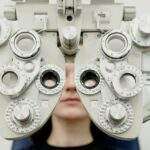
Spinal injuries and spinal problems top the chart of orthopedic-related complaints. It is a common complaint present in almost 60-70% of the individual ranging from mild back pain to severe spinal cord deformities. It is a growing concern as most people ignore the symptoms, and later period it turns out to be critical and may lead to surgery. Spinal cord issues are due to various diseases. If someone feels discomfort or pain regarding the spinal cord, one must visit the spine surgeon near you.
Types of disease-causing spinal cord injury
Trauma on the vertebral column due to accident or physical injury
A spinal cord injury may show some severe signs and symptoms such as extreme back pain, neck pain, or difficulties while bending after an accident. It may also involve other body parts injuries where there is a loss of sensation and numbness. There is a loss of function or movement of muscles caused by a contusion or bruise to the spinal cord or a compromise of blood flow to the injured part of the spinal cord.
In an accident, trauma is the most common cause of neck injury. It leads to neck issues such as a broken neck, neck sprain. Further to motor vehicle accidents, fall, and sports activity-related impact. They may cause mild injuries or severe injuries because of the wear and tear of soft tissues or broken bones. Kindly [click on the link] to find a neck injury specialist near you to discuss about the symptoms and treatments for the same.
Cervical spondylosis
It is a general term used for age-related wear and tear of the spinal discs. It is common in old age and gets worse with the increase in age. This condition is often used to describe degenerative arthritis (osteoarthritis) of the spine.
Most people don’t show any signs or symptoms, but some might experience pain or muscle spasms in the back. Non-specific treatment is required in most cases, but if the symptoms occur, treatment can be provided, such as medication, corticosteroid injections, physiotherapy, and sometimes surgery.
Pott disease
It is termed tuberculosis of the spine, usually because of hematogenous spread from other lung sites. The most affected areas of the range under this disease are the lower thoracic and upper lumbar vertebrae. It causes a type of tuberculous arthritis of the intervertebral joints. The transmission of the disease is due to bacteria traveling to the spine through a hematogenous route from an extra spinal site of infection. The common symptoms observed under the pott disease are pain and stiffness, torticollis, hoarseness, and neurologic deficits.To know more about the treatment and procedures followed by the spine surgeon for the treatment, kindly [click on the link] and find the right spine surgeon near you.
Kyphosis, lordosis & scoliosis
They are often referred to as curvatures of the spine.
Lordosis refers to the normal inward curvatures of the spine at the cervical and lumbar regions. In contrast, kyphosis refers to the typical outward curvature of the spine, specifically at the thoracic region.
Scoliosis and kyphosis can be caused because of complications from past surgeries, age-related wear and tear on the back. It also occurs when the facet joints and discs deteriorate over time and cannot support the spine’s typical posture.
The symptoms of lordosis may include back pain, discomfort, problems in moving specific ways while bending, and a large gap between the lower back and floor.
Spinal meningitis
It is caused by an infection of the fluid and membranes around the brain and spinal cord. A viral infection commonly causes meningitis, but in some cases, it might be caused because of the bacterial or fungal transmitted from person to person in any sort of form. Few vaccines prevent some forms of meningitis.
Symptoms shown under this disease are headache, fever, and stiff neck. Meningitis may get cured on its own within one to four weeks, but if it exists more than the mentioned period, one must consult the spinal cord surgeon for the treatment.
Backache due to unknown reasons
Most times, back pain develops without a cause that isn’t due to the underlying diseases. It includes muscle or ligament strain during working out or lifting too many heavyweights. It might also be caused by prolonged sitting in the office or lying down, sleeping in an uncomfortable position, getting serious with the time frame if not appropriately treated, and surgery may be needed to cure it.
Conclusion
In the beginning, people take back pain or spinal cord issues lightly. But later, those mild issues turn to severe disease, which might cost someone a lifetime disability. Therefore, it is recommended, if any sort of symptoms is observed, then one must visit the spine surgeon near you to get it treated.


